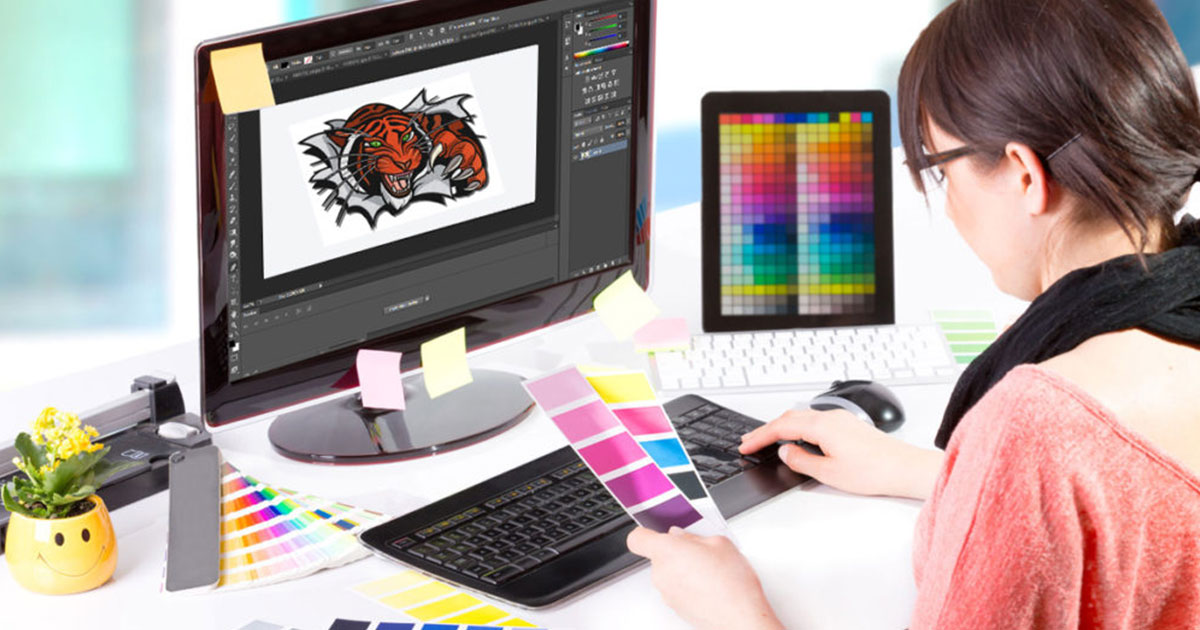Specialist Digitizing for Embroidery: Rapid and Reliable Solution
Specialist Digitizing for Embroidery: Rapid and Reliable Solution
Blog Article
Mastering the Needlework Digitizing Process: Your Ultimate Overview
Needlework digitizing is a meticulous craft that requires accuracy and experience to translate elaborate designs right into electronic styles for equipment needlework. As craftsmens begin on this journey to grasp the embroidery digitizing process, a comprehensive understanding of the basics sets the structure for quality.

Recognizing Needlework Digitizing Essentials
Needlework digitizing essentials create the structure whereupon intricate designs are translated into machine-readable formats for accurate stitching. This initial action in the needlework digitizing procedure is critical for ensuring that the final stitched item is a faithful representation of the original design. Understanding embroidery digitizing basics includes realizing vital principles such as stitch kinds, sew instructions, thickness, padding, and draw settlement.
Sew kinds play an essential duty in determining the visual and textural outcome of the embroidered layout. By choosing the proper stitch type, whether it be satin, fill, or running stitch, digitizers can achieve the wanted impact and improve the overall top quality of the embroidery. Additionally, sew instructions affects the flow and dimension of the layout, while thickness identifies the spacing and coverage of the stitches.
In addition, rug stitching gives security to the design by safeguarding the material and avoiding distortion throughout the needlework process. Draw payment is another crucial factor to consider to combat the natural propensity of material to contract when sewn. Understanding these needlework digitizing basics is basic for developing professional-quality embroidered products.
Choosing the Right Digitizing Software Application
Selecting the suitable digitizing software is an essential decision that significantly influences the effectiveness and top quality of the embroidery digitizing process. Digitizing for Embroidery. When picking the right digitizing software application, it is essential to think about variables such as the complexity of styles you intend to create, the user-friendliness of the software, the degree of customer assistance offered, and the compatibility with your needlework machine
There are numerous digitizing software options readily available in the market, ranging from fundamental programs for novices to advanced software application for expert digitizers. Some preferred selections consist of Wilcom EmbroideryStudio, Hatch Needlework Software Program, and PulseID. These software provide a variety of devices and attributes to help you produce complex layouts easily.
Before making a choice, it is suggested to discover the various software program choices with complimentary tests or trials to establish which one best suits your requirements. In addition, reviewing testimonials and looking for referrals from knowledgeable digitizers can supply useful understandings into the strengths and weaknesses of each software (Digitizing for Embroidery). By meticulously examining your demands and comparing the functions of different digitizing software, you can make an educated choice that boosts your needlework digitizing process
Digitizing Tools and Strategies

Optimizing Style Setup for Needlework
Understanding the intricacies of design settings is fundamental in accomplishing ideal lead to the needlework digitizing procedure, building upon the structure laid by comprehending digitizing devices and techniques. When optimizing design setups for needlework, it is vital to take into consideration variables such as stitch type, density, underlay, pull payment, and registration. Sew kind choice affects the total feel and look of the layout, with alternatives like satin, fill, and running stitches offering different appearances and effects. Density refers to the spacing and thickness click this of stitches, affecting the design's insurance coverage and resilience. Appropriate rug stitching offers stability and avoids material distortion, particularly for complex designs or on elastic products. Pull payment changes for fabric stretch during stitching, making sure exact layout duplication. Registration settings align various aspects of the design properly, keeping general design integrity. By fine-tuning these layout setups, embroiderers can boost the top quality and precision of their embroidered creations.

Troubleshooting Common Digitizing Issues
When experiencing typical digitizing problems during the needlework procedure, it is important to understand the source and implement efficient options quickly. One usual issue is stitch density concerns, where stitches may be too thick, causing the fabric to pucker, or too thin, resulting in voids in the design. Readjusting the stitch density setups in the digitizing software can aid fix this concern.
One more frequent obstacle is thread breaks throughout the embroidery procedure. This can occur due to various factors such as inaccurate tension setups, dull needles, or utilizing low-quality string. Guaranteeing correct maintenance of the embroidery equipment, including normal needle modifications and tension changes, can minimize the event of string breaks.
In addition, design enrollment mistakes can result in misaligned components within the embroidery style. Inspecting the style positioning in the digitizing software application and making essential modifications before stitching can help in avoiding this issue. By addressing these common digitizing issues promptly and properly, you can ensure a smoother embroidery procedure and high-quality finished items.
Verdict
Finally, understanding the needlework digitizing process requires a strong understanding of the essentials, the appropriate important source option of software application, and knowledge of tools and strategies. Enhancing style settings and repairing usual digitizing problems are essential steps in making certain high-grade needlework results. By adhering to these actions vigilantly, one can achieve accuracy and effectiveness in the digitizing process.
Report this page